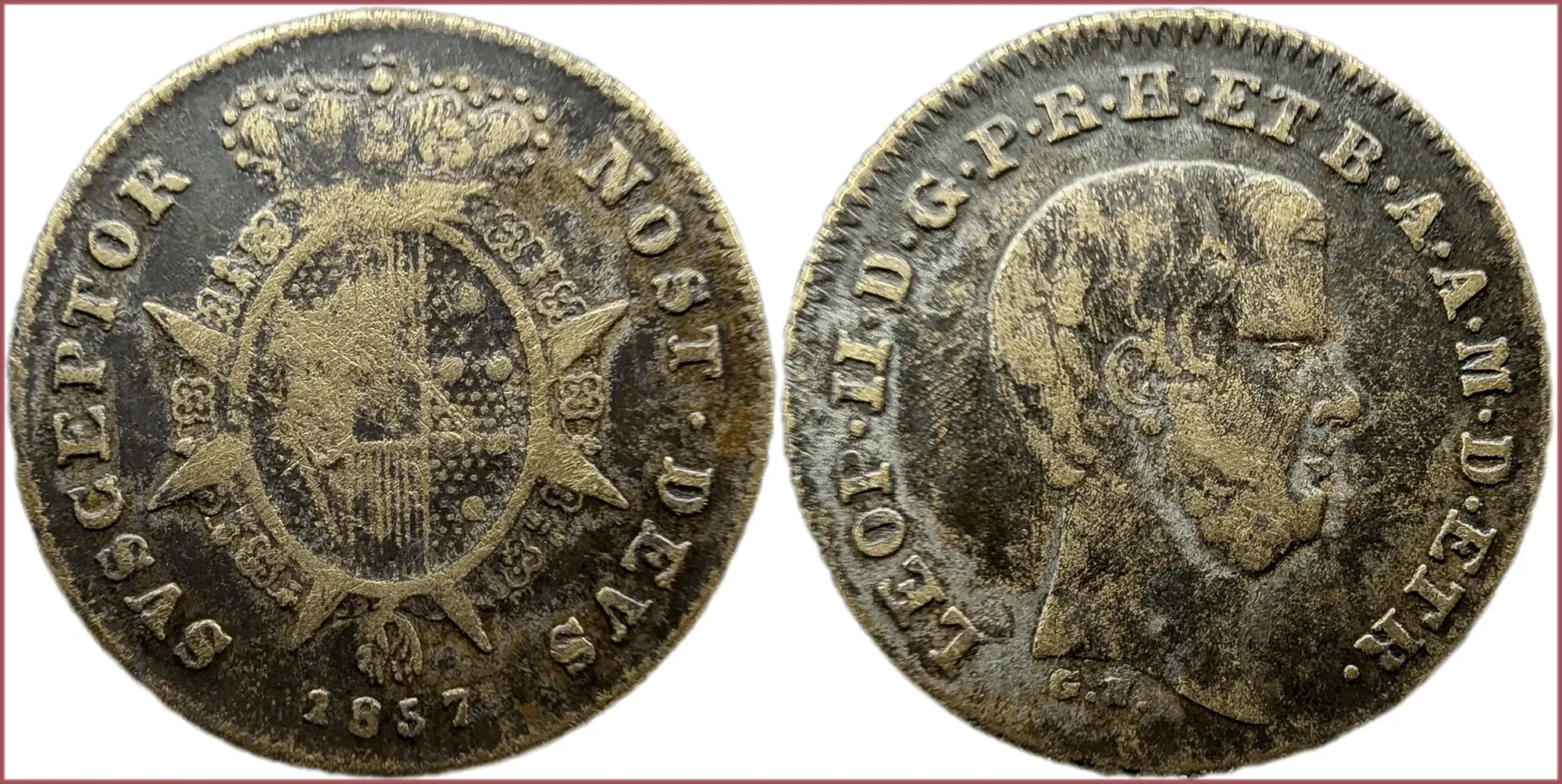PAOLO: COIN OF TUSCANY
1/2 paolo, 1857: Grand Duchy of Tuscany (Italy)
Ruler: Leopold II (Italian "Leopoldo II Giovanni Giuseppe Francesco Ferdinando Carlo d'Asburgo-Lorena") — Grand Duke of Tuscany (1824-1859); belonged to the Habsburg-Lorraine dynasty.
SVSCEPTOR NOST DEVS: The God is our refuge ("susceptor noster Deus...": a quote from the Book of Psalms). — Similar inscriptions were often used on old coins of European Christian states to emphasize the divine support of a ruler or state. It was not just a religious slogan, but also a symbol of legitimacy of power. In Tuscany in the 19th century, the Habsburgs-Lorraine ruled, and similar mottos were common on their coins.
Simplified (small) coat of arms of Grand Duchy of Tuscany in the Habsburg-Lorraine period (19th century).
LEOP II - D - G - P - R - H - ET B - A - A - M - D - ETR: Leopoldus II, Dei Gratia Princeps Regni Hungariae et Bohemiae, Archidux Austriae, Magnus Dux Etruriae (Leopold II, by the Grace of God Prince of the Kingdom of Hungary and Bohemia, Archduke of Austria, Grand Duke of Etruria /Tuscany/).
Portrait of Leopold II — Grand Duke of Tuscany. Below is the abbreviation "G.N.", which may mean Gubernator Nationis or Gubernator Natus, i.e. "born ruler" or "governor of the nation".
The coin design was created by the engraver Giuseppe Nideröst.
Mintage: 791.200.
- Silver (0.917): 18 mm - 1.24 g
- Reference price: 37.4$
COIN PAOLO — WHERE & WHEN (coins catalog: by names & emitents)
- ITALY, 16th-19th centuries — ITALIAN STATES (Grand Duchy of Tuscany, Duchy of Castro, Duchy of Massa-Carrara, Principality of Piombino, Piacenza... — Papal States): paolo = 10 baiocco = 2 grosso
PAOLO as coin name.
Paolo — silver Italian coin of the 16th-19th centuries. It is characteristic of the Papal States and some other neighboring historical Italian states. It was equal to 2 grosso.
In essence, the paolo can be considered a derivative (or even to some extent a variety) of another Italian coin — giulio.
At the beginning of the 16th century, a large silver coin worth 2 grosso was first minted in the Papal States for that time (over 4 grams), which was named giulio in honor of the then ruling Pope Julius II. Quite quickly, this type of coin began to contain less and less pure silver in its composition.
Therefore, in 1540, Pope Paul III introduced a new coin with a higher silver content, which was called paolo (sometimes paulo) in honor of Paul III. Like the giulio, the paolo was also equal to 2 grosso or 10 baiocco.
By the mid-19th century (the end of the issue), the weight of silver in the paolo had also decreased significantly.
The paolo is a rather rare coin denomination: only a few types of this coin are known, and it is not very common in numismatic collections.


